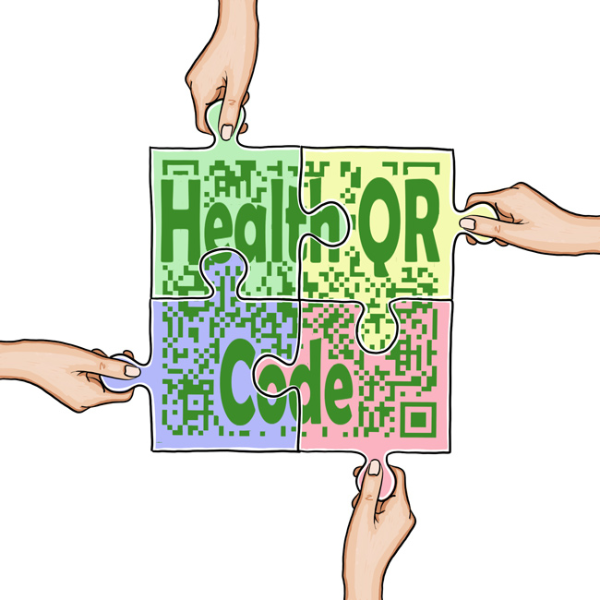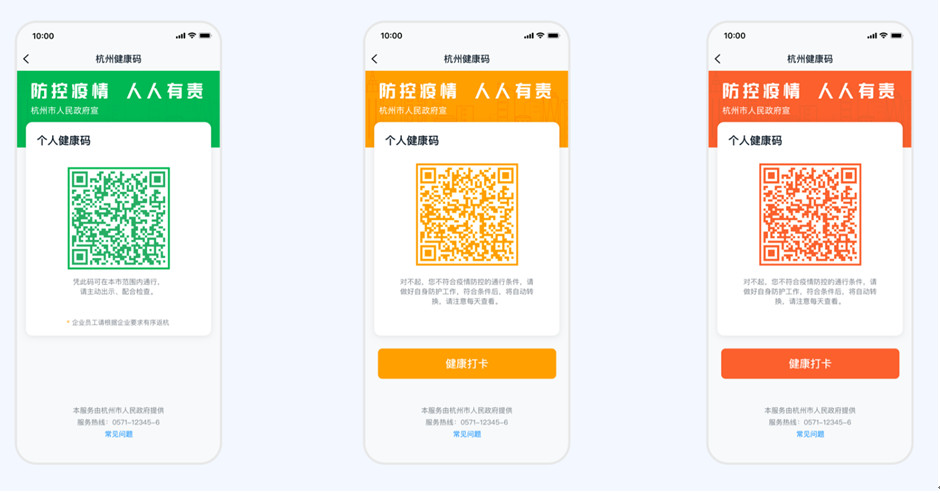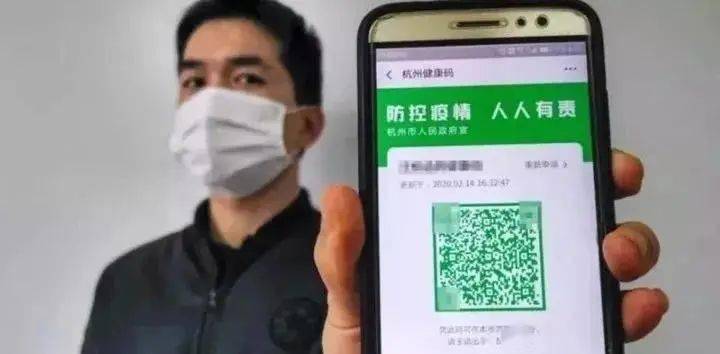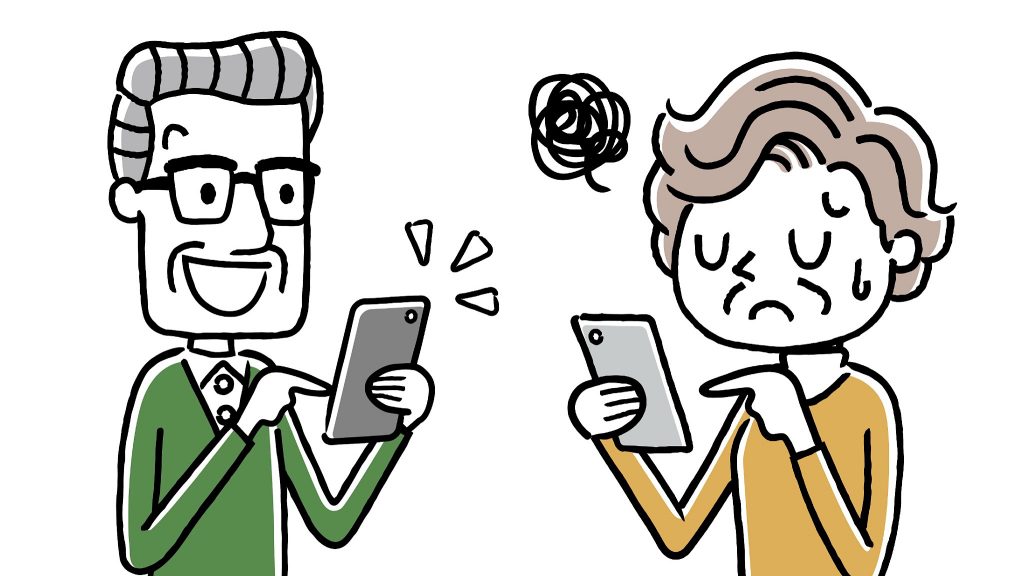Health QR code (system): reasonable data collection or tracking surveillance under the fantasy of Big Data?
Health Code, a personal QR code created by the government of Hangzhou in cooperation with mobile giant Alipay and designed for collecting and controlling the covid-19 cases, was initially launched in Hangzhou on February 11th, 2020 and was widely spread in merely one month to be available for all Alipay users in China (Jiang).

Basic application procedure/function
As a dynamic QR code needs applying with authentic personal information and compulsory survey of basic travelling history, the code belongs to a certain individual, requests the action tracking of the past 14 days, self check of covid-19 symptoms and encourages the sharing of real time location when entering any public facility. The possible green, yellow and red codes that users could have from various regions in China represent subtly different restrictions for individuals.
Taking health code for Hangzhou, the capital of Zhejiang province, as an example (Figure 2): GREEN code allows normal entering or leaving from Hangzhou. RED code requests the holder to impose self quarantine at home or mass quarantine for at least 14 days with everyday update of health condition to the interface, and the alarming RED will be eligible to change to GREEN after self reporting as normal for the past two weeks. Likewise, YELLOW code represents similar request as the RED code, which asks holders to do the same form of quarantine and self report for the past 7 days to be qualified for GREEN code (“A Quick Guide To ‘Hangzhou Health Code’”).

Emergent reaction to the outbreak
Health QR code (system) reacts to the epidemic and emerges in the future plan of local/central government incredibly fast. This Big Data collection system largely relieves the pressure of dynamic statistics and further allows recovery of production and daily life. It cannot be denied that the brand new covid-19 oriented system effectively reduces the panic of disinformation at initial stage and benefits the monitoring of close contacts and suspected cases, however, due to the emergent nationwide outbreak of covid-19 in China in short time, the sudden launch of health QR code may lack evaluation of the privacy violation.
Surely, there is no entirely raw data (Gitelman, and Jackson), the application process of health code itself is a Big Data collection with explicit reason and hierarchies depending on the severe levels of Covid-19 transmission. The debatable problem is the health code works well so that leaves Big Data technology a relatively one-sided fantastic impression to the public, while the Big Data as a method needs to be handled with critical thinking (Boyd, and Crawford, 664).
Misleading impression
The collection request for this public health emergency seems so correct that the givers of original data can easily be misled. Health code users concentrate more on the volume and efficiency shown in the outcome of using it, which can be reflected from the high usage and trend of cross-nation application (Jiang).
People in China believe the health QR code as an effective Big Data method regardless of the practical omissions. In actual practical check of health code, for example at the entrances of subway station, shopping mall and community, the security check the health code one by one with bare eyes rather than swiping it under digital machines (Figure 3). This means, in the case of heavy traffic, a screenshot could work through the check as well. Apart from this, with the digital barrier for the elderly of using the post-covid-19 health code, the objectivity of data sets can be questioned in recent health code system (Figure 4).


Besides, Big Data calls for more efforts and time to structure and organize, thus generating better data for sample sets to serve subjective purposes (Langlois, and Elmer, 12; Boyd, and Crawford, 668). Health code (system) in China was initially built with specific aim to set multilayered travel restrictions for the management of the Covid-19 situation and now the goal has expanded to support the economic recovery, which means the data collected and being collected for health code have simultaneously applied to a more socio-economic field rather than pure Covid-19 issue. The logic has altered so that the affordance of health code is broadened, the focus shifts from bottom-up self report to top-down tracking. Users may ignore the countless possibilities of related directions such a database can provide, which does not necessarily work for the public good (668).
Privacy and surveillance concerns
Although the privacy concerns already exist (“New Health Code Raises Privacy Concerns”), this issue of health code may not gain much attention unless the global context of Covid-19 is largely on the mend. We still need the personal-oriented health QR code to distinguish and screen the asymptomatic infected patients hidden in unknown area, especially through the governmentally unified health code system (Pan).
From February till September, updating and showing health code become daily routines of Chinese. After being encouraged to do inter surveillance in the most intensive period of Covid-19 in March and April, the accuracy and depth of history surveillance from the Chinese government also grows. The detailed surveillance raises both sense of safety and worries at the same time, which turn ups to be one core difficulty to adopt similar QR codes in many countries. The dataveillance in this case is likely to be a new form of power relation, gradually makes the code holders subordinate, thus attempting to deeper monitoring (Ruppert et al., 2).
To what extent the personal data collected in Covid-19 through health code (system) will be accessible for further analysis? In what ways will the government and technology suppliers store them? How long will the system last? Will Covid-19 become an excuse of surveillance after the total economic recovery? The number of questions left by the health code system is growing as developing.
According to Boyd and Crawford (671), data can be meaningless without the base of context. The temporary context of Covid-19 will finally be a page of history, however, the broader context of digitalization will not disappear. These data remain meaningful for government and the technology companies to build digital management on political and commercial purposes.
The future storage and access right of the data generated from health code require understandable explanation from the enterprises and authorities toward the massive audiences/users. Alipay has already derived larger assemblage of health care programs for a more systematic digital management, which are inserted in Alipay as multiple handling methods to face the epidemic, or to say, the second wave of Covid-19 in global context. Time may see the potential concerns and solutions relevant to the database of health code after the covid-19.
References
Figure 1: source link: http://govt.chinadaily.com.cn/s/202004/10/WS5e8fe78f498ea01b9aea24a2/health-code-what-and-how.html
Figure 2: source link: http://en.zhejianglab.com/html/2020/latestnews_0311/115.html
Figure 3: source link: https://en.pingwest.com/a/6348
Figure 4: source link: https://news.cgtn.com/news/2020-04-20/How-to-provide-more-convenient-services-for-the-elderly-amid-epidemic-PPlXjj5cEU/index.html
“A Quick Guide To ‘Hangzhou Health Code’”. Zhejiang Lab, 2020, http://en.zhejianglab.com/html/2020/latestnews_0311/115. html. Accessed 23 Sept 2020.
boyd, danah, and Kate Crawford. “CRITICAL QUESTIONS FOR BIG DATA”. Information, Communication & Society, vol 15, no. 5, 2012, pp. 662-679., http://dx.doi.org/10.1080/1369118X.2012.678878.
Gitelman, Lisa, and Virginia Jackson. “Introduction”. Raw Data Is An Oxymoron, Lisa Gitelman, MIT Press, Cambridge, 2013, pp. 1-14.
Jiang, Xiheng. “Health Code: What And How?”. Govt.Chinadaily.Com.Cn, 2020,http://govt.chinadaily.com.cn/s/202004/ 10/WS5e8fe78f498ea01b9aea24a2/health-code-what-and-how.html. Accessed 23 Sept 2020.
Langlois, Ganaele, and Greg Elmer. “The research politics of social media platforms.” Culture machine, vol 14, 2013, pp. 1-17.
“New Health Code Raises Privacy Concerns”. Globaltimes, 2020, https://www.globaltimes.cn/content/1189494.shtml. Accessed 23 Sept 2020.
Pan, Xiao-Ben. “Application of personal-oriented digital technology in preventing transmission of COVID-19, China.” Irish Journal of Medical Science (1971-) , 2020, pp. 1-2.
Ruppert, Evelyn et al. “Data Politics”. Big Data & Society, vol 4, no. 2, 2017, pp. 1-7. SAGE Publications, doi:10.1177/2053951717717749.